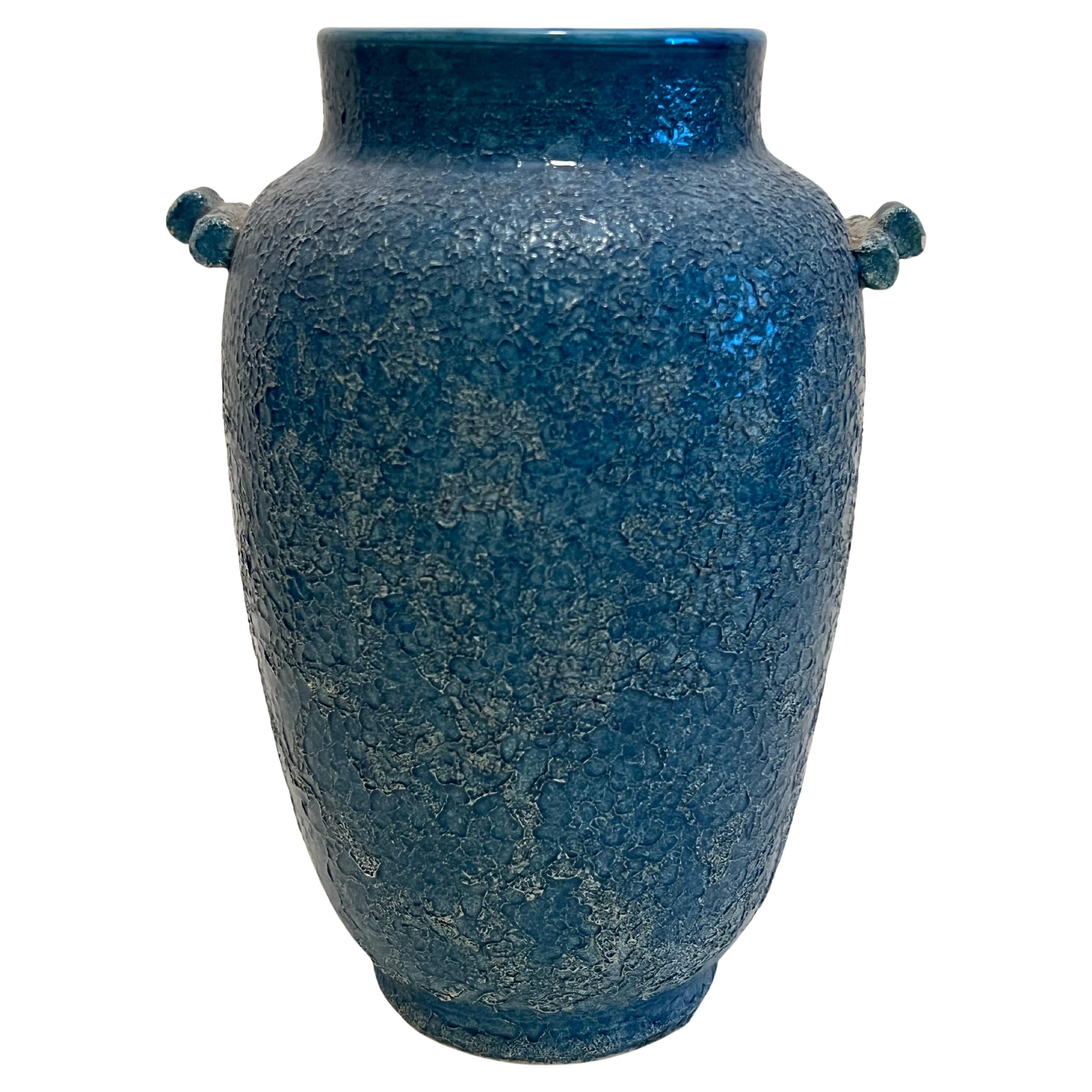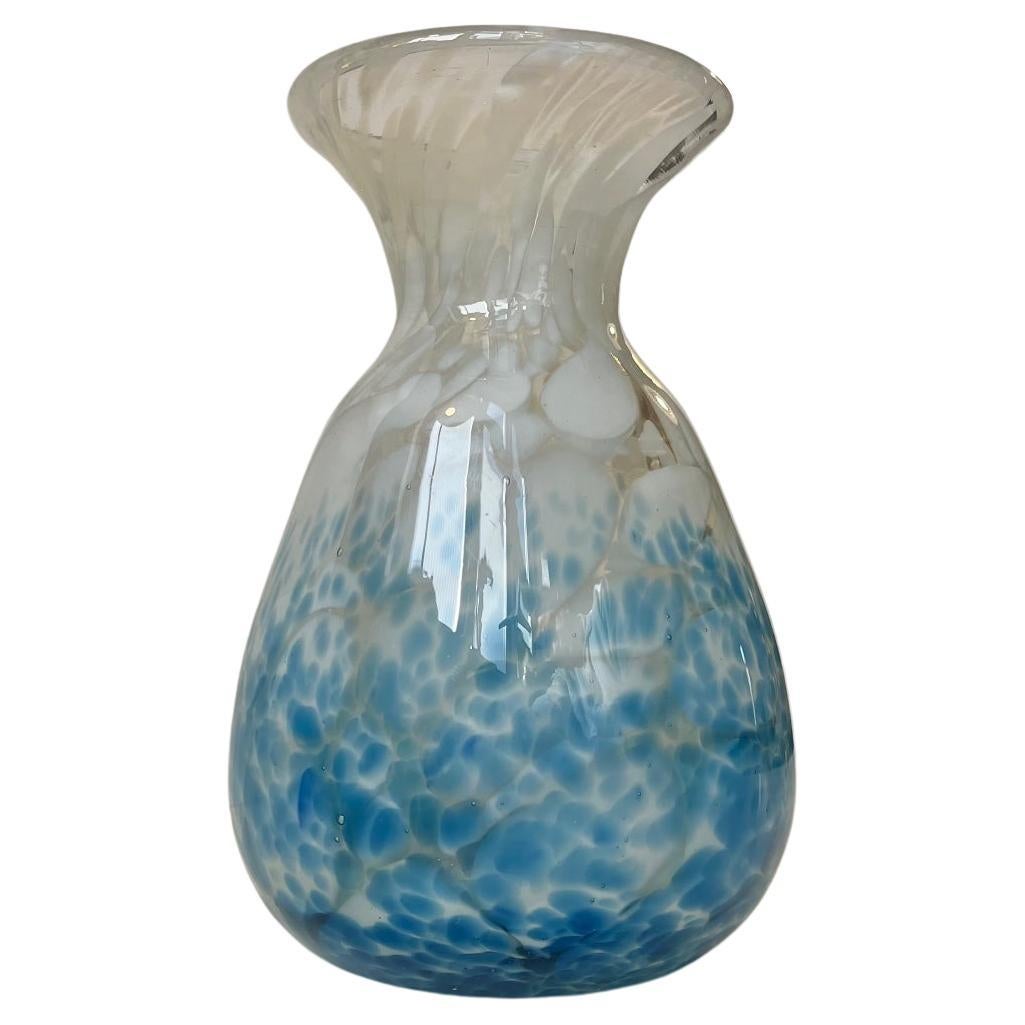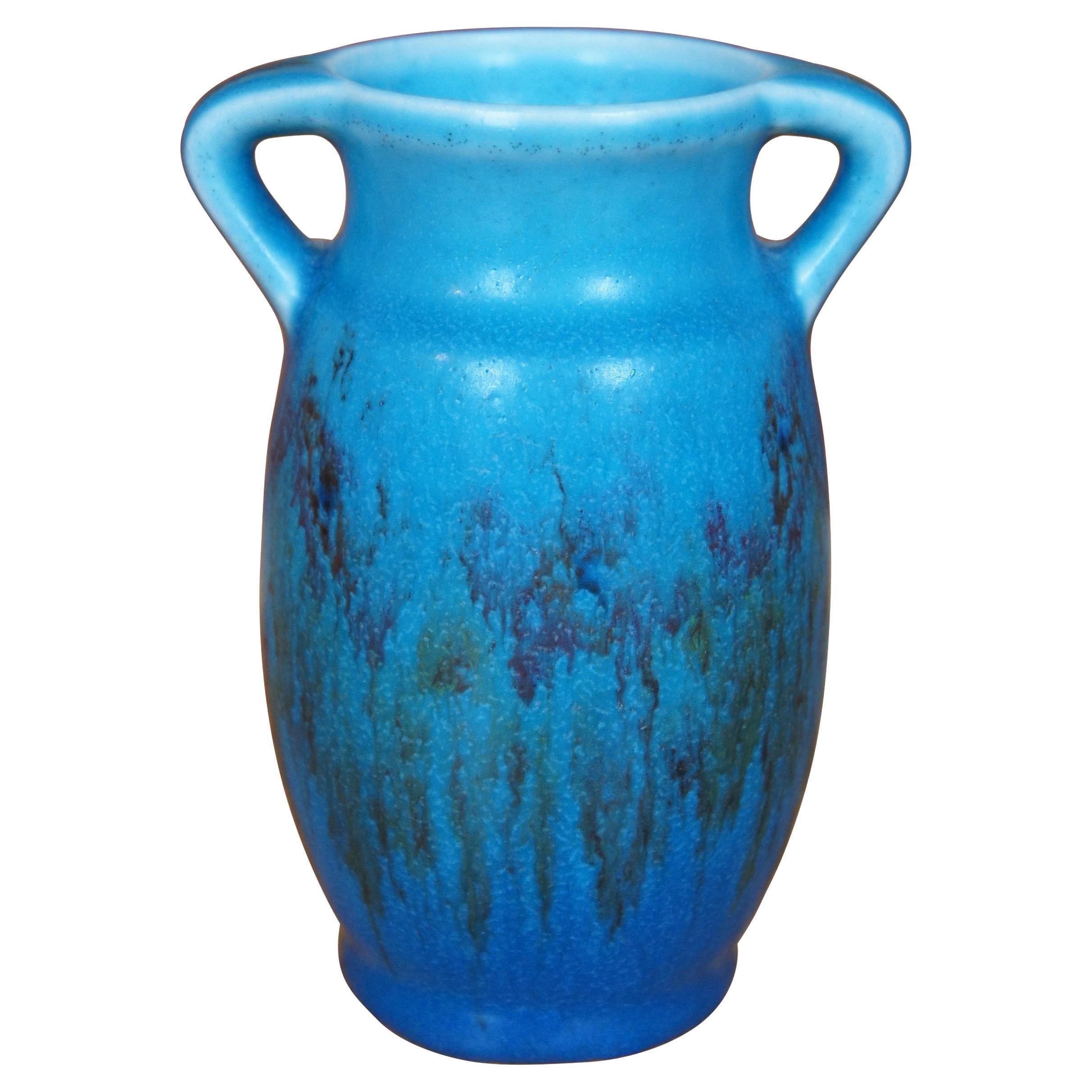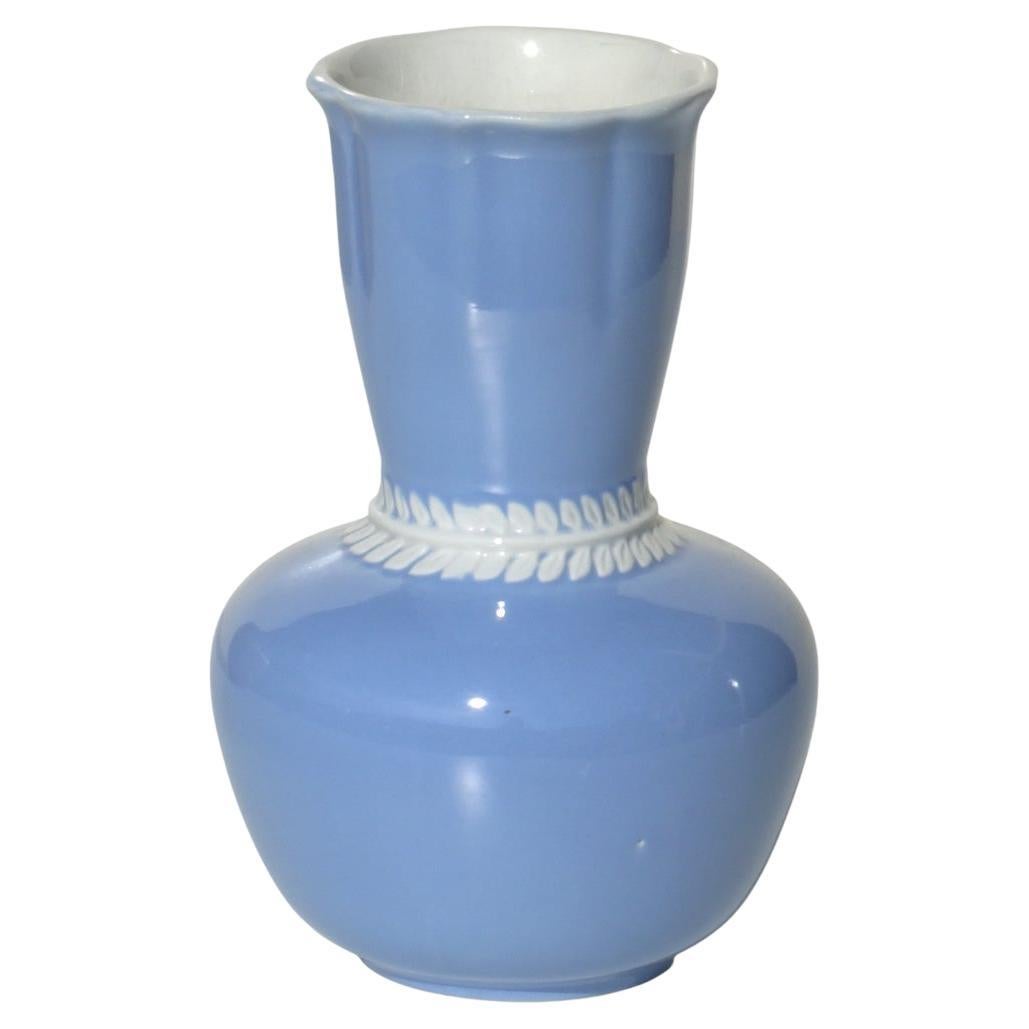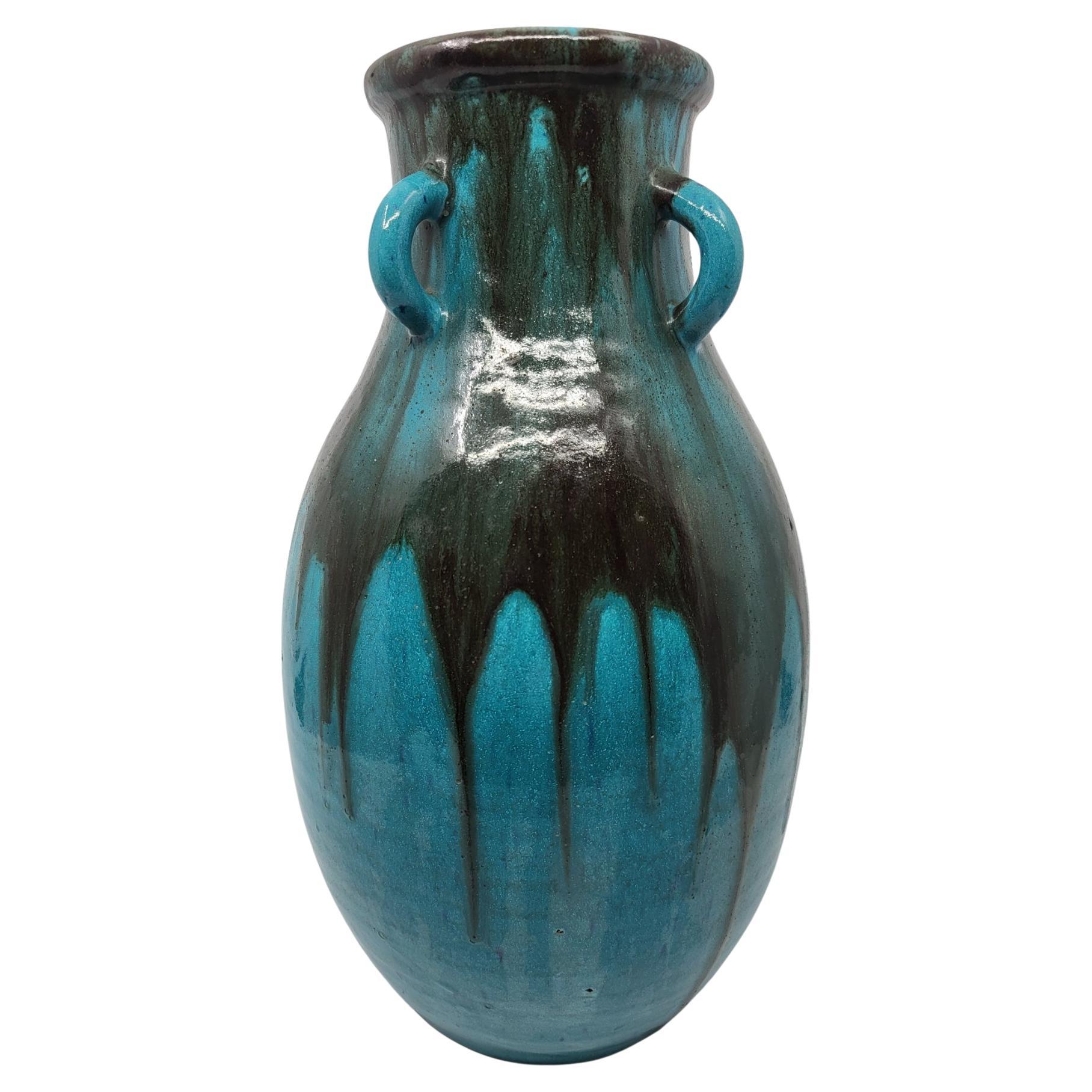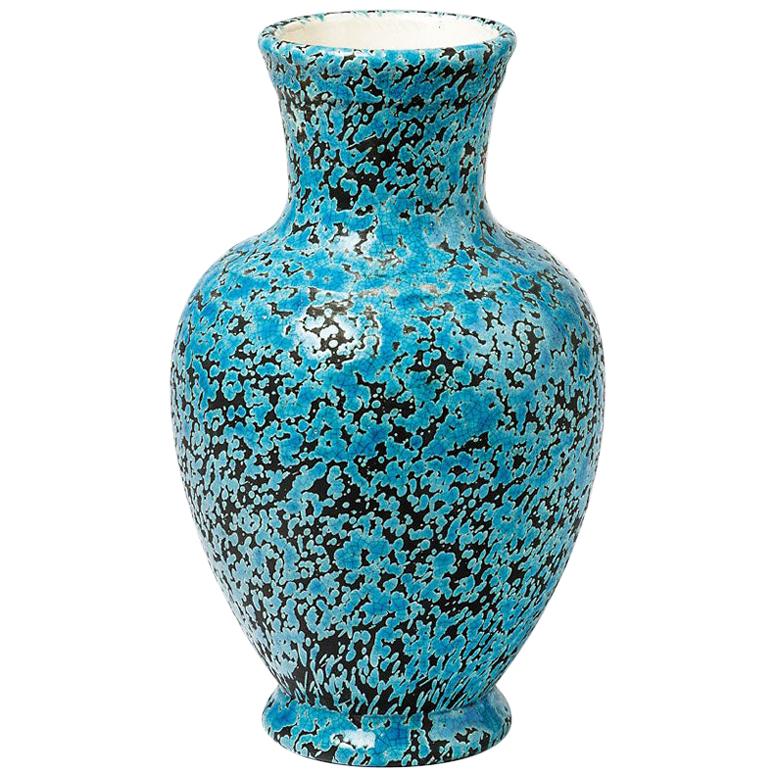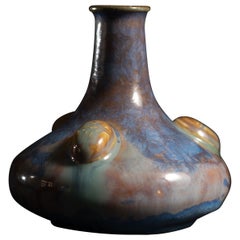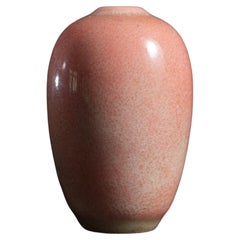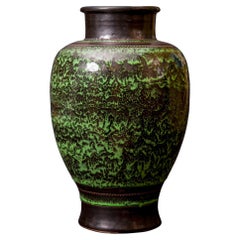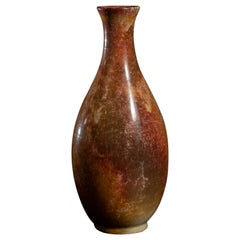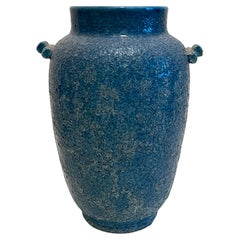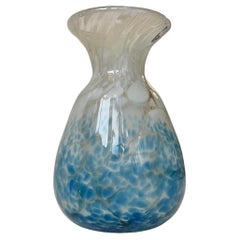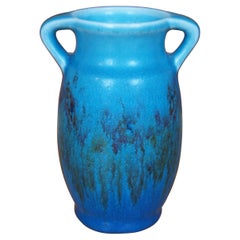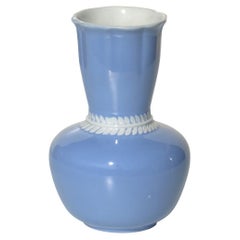Items Similar to Arts & Crafts Crystalline Cerulean Vase by Adelaide Alsop Robineau
Want more images or videos?
Request additional images or videos from the seller
1 of 8
Arts & Crafts Crystalline Cerulean Vase by Adelaide Alsop Robineau
$12,000
£9,049.19
€10,465.82
CA$16,835.94
A$18,714.19
CHF 9,809.58
MX$228,545.52
NOK 122,466.90
SEK 115,218.51
DKK 78,113.87
About the Item
Note: We highly recommend shipping through 1stDibs for its cost effectiveness, full insurance coverage, and reliable handling. While standard parcel services are an option, the default quote does not include packing and insurance. 1stDibs shipping provides a level of value, protection, and care that aligns with our commitment to safeguarding historic artworks and providing excellent client service.
“A Robineau vase is a true work of art, unique in conception and perfect in execution, for every piece that left this studio was a labor of love.” – Ethel Brand Wise, The American Magazine of Art, 1929
Adelaide Alsop Robineau was a pioneer in American studio ceramics and excelled as an innovator in pottery both technically and aesthetically. As a young woman of high society in the late Victorian era, she gained early accolades as a skilled watercolorist and china painter and taught for a time at St. Mary’s Hall in Minnesota. In 1899, she married Samuel E. Robineau, a French gentleman and collector of Chinese ceramics. He was deeply intrigued by her talent and steadfastly supported and encouraged her throughout her career. The couple collaborated to produce a popular and influential monthly journal together, Keramic Studio, and went on to build a studio on their property in Syracuse, New York, which they named Four Winds. Robineau would also go on to teach for many years at Syracuse University while creating her own work and raising three children.
Early in her career, she studied at Alfred University under Charles Binns, who is widely considered to be the progenitor of contemporary studio ceramics in America. His program established a shift in the craft of ceramics as an academic pursuit, rather than one of apprenticeship. Pottery throwers and the artists who decorated the wares traditionally inhabited separate roles in ceramic manufacture, a practice common in Europe. Binns’ philosophy merged the two, such that the potter had total agency of the final product. This marked a historic divergence in the creation of art pottery – one that Adelaide Robineau fully embraced. Indeed, she became one of the first ceramists, and one of the first women, to throw her own pots.
Robineau was greatly inspired by the work and writings of Taxile Doat of Sèvres, France. As she began experimenting with clays and the high temperature method known as Grand Feu, she went from working in stoneware to porcelain. Porcelain is a notoriously technically difficult enterprise for even the simplest of pieces, and she added further complexity to the process by intricately carving many of her works, making them even more difficult to fire. The porcelain-making process was so volatile, in fact, that many of her pieces would burst in the kiln. Ever the tireless and determined innovator, she experimented with and invented many new glazes. She was, in fact, the first American ceramist to apply colored glazes to porcelain.
The period between 1909 and 1911 marks an important time in Robineau’s career when she made some of her most exceptional work. Joining other influential potters of the time such as Taxile Doat, Frederick H. Rhead, and Emile Diffloth, she was part of an impressive roster of artists working and teaching at the University City Pottery and Art Institute in Missouri. During this time, she produced what is widely considered her life’s masterpiece, the Scarab Vase – a veritable White Whale of early American ceramics – which was purchased from her husband in 1930 by the Everson Museum of Art in Syracuse, New York. This seventeen-inch tall, intricately carved magnum opus, complete with a stand and lid, took her 1,000 hours to carve, leading her to dub it The Apotheosis of the Toiler. It won her the esteemed Grand Prize in Ceramics at the 1911 International Exposition in Turin, Italy.
Robineau would go on to win several highly sought-after prizes throughout her career, and she garnered almost unanimous praise from critics, collectors, and admirers alike. At the 1915 Panama Pacific International Exposition, Helen Keller handled some of her pieces, and she was reported to have said of one with a wisteria motif: “Seven times fired in the furnace and not found wanting.” Her work was the first of the Metropolitan Museum of Art’s purchases when it began collecting American contemporary ceramics in 1922. In 1928, the year before her passing, several of her creations were represented in their International Exhibition of Ceramic Art and in 1929, after her death, she became the first ceramist honored with a retrospective exhibition there.
An artist of many firsts, Adelaide Robineau, through her passion, perseverance, and insight, left an indelible mark in the world of American ceramics. Widely recognized as a leader in her field, she left a celebrated legacy and continues to inspire collectors and potters worldwide.
- Rago
- Creator:Adelaide Alsop Robineau (Artist)
- Dimensions:Height: 3.5 in (8.89 cm)Width: 5 in (12.7 cm)Depth: 5 in (12.7 cm)
- Style:Arts and Crafts (Of the Period)
- Materials and Techniques:Porcelain,Glazed
- Place of Origin:
- Period:1910-1919
- Date of Manufacture:c. 1910
- Condition:
- Seller Location:Chicago, US
- Reference Number:1stDibs: LU7300238310322
About the Seller
5.0
Vetted Professional Seller
Every seller passes strict standards for authenticity and reliability
1stDibs seller since 2022
18 sales on 1stDibs
Typical response time: 9 hours
- ShippingRetrieving quote...Shipping from: Chicago, US
- Return Policy
Authenticity Guarantee
In the unlikely event there’s an issue with an item’s authenticity, contact us within 1 year for a full refund. DetailsMoney-Back Guarantee
If your item is not as described, is damaged in transit, or does not arrive, contact us within 7 days for a full refund. Details24-Hour Cancellation
You have a 24-hour grace period in which to reconsider your purchase, with no questions asked.Vetted Professional Sellers
Our world-class sellers must adhere to strict standards for service and quality, maintaining the integrity of our listings.Price-Match Guarantee
If you find that a seller listed the same item for a lower price elsewhere, we’ll match it.Trusted Global Delivery
Our best-in-class carrier network provides specialized shipping options worldwide, including custom delivery.More From This Seller
View AllArts & Crafts Scarab Vase by Adelaide Alsop Robineau
By Adelaide Alsop Robineau
Located in Chicago, US
Note: We highly recommend shipping through 1stDibs for its cost effectiveness, full insurance coverage, and reliable handling. While standard parcel services are an option, the default quote does not include packing and insurance. 1stDibs shipping provides a level of value, protection, and care that aligns with our commitment to safeguarding historic artworks and providing excellent client service.
“A Robineau vase is a true work of art, unique in conception and perfect in execution, for every piece that left this studio was a labor of love.” – Ethel Brand Wise, The American Magazine of Art, 1929
Adelaide Alsop Robineau was a pioneer in American studio ceramics and excelled as an innovator in pottery both technically and aesthetically. As a young woman of high society in the late Victorian era, she gained early accolades as a skilled watercolorist and china painter and taught for a time at St. Mary’s Hall in Minnesota. In 1899, she married Samuel E. Robineau, a French gentleman and collector of Chinese ceramics. He was deeply intrigued by her talent and steadfastly supported and encouraged her throughout her career. The couple collaborated to produce a popular and influential monthly journal together, Keramic Studio, and went on to build a studio on their property in Syracuse, New York, which they named Four Winds. Robineau would also go on to teach for many years at Syracuse University while creating her own work and raising three children.
Early in her career, she studied at Alfred University under Charles Binns, who is widely considered to be the progenitor of contemporary studio ceramics in America. His program established a shift in the craft of ceramics as an academic pursuit, rather than one of apprenticeship. Pottery throwers and the artists who decorated the wares traditionally inhabited separate roles in ceramic manufacture, a practice common in Europe. Binns’ philosophy merged the two, such that the potter had total agency of the final product. This marked a historic divergence in the creation of art pottery – one that Adelaide Robineau...
Category
Vintage 1910s American Arts and Crafts Vases
Materials
Porcelain
Arts & Crafts Blush Vase by Adelaide Alsop Robineau for University City
By Adelaide Alsop Robineau
Located in Chicago, US
“A Robineau vase is a true work of art, unique in conception and perfect in execution, for every piece that left this studio was a labor of love.” – Ethel Brand Wise, The American Magazine of Art, 1929
Adelaide Alsop Robineau was a pioneer in American studio ceramics and excelled as an innovator in pottery both technically and aesthetically. As a young woman of high society in the late Victorian era, she gained early accolades as a skilled watercolorist and china painter and taught for a time at St. Mary’s Hall in Minnesota. In 1899, she married Samuel E. Robineau, a French gentleman and collector of Chinese ceramics. He was deeply intrigued by her talent and steadfastly supported and encouraged her throughout her career. The couple collaborated to produce a popular and influential monthly journal together, Keramic Studio, and went on to build a studio on their property in Syracuse, New York, which they named Four Winds. Robineau would also go on to teach for many years at Syracuse University while creating her own work and raising three children.
Early in her career, she studied at Alfred University under Charles Binns, who is widely considered to be the progenitor of contemporary studio ceramics in America. His program established a shift in the craft of ceramics as an academic pursuit, rather than one of apprenticeship. Pottery throwers and the artists who decorated the wares traditionally inhabited separate roles in ceramic manufacture, a practice common in Europe. Binns’ philosophy merged the two, such that the potter had total agency of the final product. This marked a historic divergence in the creation of art pottery – one that Adelaide Robineau...
Category
Vintage 1910s American Arts and Crafts Vases
Materials
Porcelain
Baulister Enamel Vase by Emile Lenoble
By Emile Lenoble
Located in Chicago, US
Note: We highly recommend shipping through 1stDibs for its cost effectiveness, full insurance coverage, and reliable handling. While standard parcel services are an option, the defau...
Category
Vintage 1920s French Art Deco Vases
Materials
Stoneware
Arts & Crafts Ochre Vase by Adelaide Alsop Robineau
By Adelaide Alsop Robineau
Located in Chicago, US
Note: We highly recommend shipping through 1stDibs for its cost effectiveness, full insurance coverage, and reliable handling. While standard parcel services are an option, the default quote does not include packing and insurance. 1stDibs shipping provides a level of value, protection, and care that aligns with our commitment to safeguarding historic artworks and providing excellent client service.
“A Robineau vase is a true work of art, unique in conception and perfect in execution, for every piece that left this studio was a labor of love.” – Ethel Brand Wise, The American Magazine of Art, 1929
Adelaide Alsop Robineau was a pioneer in American studio ceramics and excelled as an innovator in pottery both technically and aesthetically. As a young woman of high society in the late Victorian era, she gained early accolades as a skilled watercolorist and china painter and taught for a time at St. Mary’s Hall in Minnesota. In 1899, she married Samuel E. Robineau, a French gentleman and collector of Chinese ceramics. He was deeply intrigued by her talent and steadfastly supported and encouraged her throughout her career. The couple collaborated to produce a popular and influential monthly journal together, Keramic Studio, and went on to build a studio on their property in Syracuse, New York, which they named Four Winds. Robineau would also go on to teach for many years at Syracuse University while creating her own work and raising three children.
Early in her career, she studied at Alfred University under Charles Binns, who is widely considered to be the progenitor of contemporary studio ceramics in America. His program established a shift in the craft of ceramics as an academic pursuit, rather than one of apprenticeship. Pottery throwers and the artists who decorated the wares traditionally inhabited separate roles in ceramic manufacture, a practice common in Europe. Binns’ philosophy merged the two, such that the potter had total agency of the final product. This marked a historic divergence in the creation of art pottery – one that Adelaide Robineau...
Category
Vintage 1910s American Arts and Crafts Vases
Materials
Porcelain
Art Nouveau Poppy Stoneware Vase by Ernest Chaplet and Edouard Dammouse
By Edouard Dammouse, Ernest Chaplet
Located in Chicago, US
Poppies, golden-accented in analagous colors of blue and orange, creep up their leafy green stalks which sag from the heavy weight of the flowers. Like tired heavy-lidded eyes, the poppies symbolize hypnos’ sleep-inducing effects. Dammouse’s somnific symbolism evokes an other-worldly dream-like state and acts as a vehicle to tap into the imagination. Much more than a pretty face, or a pretty vase, this is a sublime piece of art, and Dammouse makes clear the influence of Braquemond and others by employing this Symbolist style. Beaudelaire’s credo that “Beauty must contain the absolute and the particular, the eternal and the transitory” aptly applies. Created while both Chaplet and Edouard Dammouse were employed by Haviland & Co. at its Paris location, this vase is a prime example of Chaplet’s early creative output of matte brown stoneware. Both artists demonstrate a strong link and affinity for Japonisme in the vase’s traditional form and in the painterly approach Dammouse brings to the enamel glaze. His treatment of enhancing the floral decoration with gold detailing calls to mind Kintsugi aesthetic principles. Affixed to the vase’s underside is its original label indicating it was sold at the chic A la Paix, a Parisian gallery located on the prestigious Avenue de l’Opera which opened in 1891, specializing in glass and ceramic objects of art.
Ernest Chaplet (1835-1907) Not only was Chaplet France’s premier studio ceramist, the example he set of personally creating a ceramic object from the conceptual phase through modeling, firing and glazing - constantly reaching for new and innovative modes of expression and technique - elevated the notion of a ceramist from artisan to Artist. While Director of Production for Haviland & Co., Chaplet expanded their focus from porcelain into stoneware production and developed the barbotine method of painting earthenware with liquid clay as well as conducted extensive research in glaze techniques. He was awarded a Gold Medal in 1889 at Paris’ l’Exposition Universelle for his revolutionary sang de boeuf glaze. That same year, Chaplet opened his own atelier in Choisy-le-Roi where he continued to produce avant-garde stoneware and support younger talent.
Edouard Dammouse (1850-1903) Trained as a painter, Paris born Edouard Dammouse studied under Felix Bracquemond, Ernest Chaplet’s predecessor at Haviland & Co.‘s Auteuil studio. Edouard followed his brother, Albert, and Chaplet to Haviland’s Paris...
Category
Antique 1890s French Art Nouveau Vases
Materials
Enamel
Art Nouveau Stoneware Gourd Vase Pierre-Adrien Dalpayrat
By Pierre-Adrien Dalpayrat
Located in Chicago, US
PIERRE-ADRIEN DALPAYRAT (1844-1910) After working nearly half his life as an itinerant faience painter and directing production for commercial porcelain manufacturers, Dalpayrat’s ey...
Category
Vintage 1910s French Art Nouveau Vases
Materials
Stoneware
You May Also Like
Cerulean Blue French Art Deco Vase
Located in Miami Beach, FL
French art deco vase with mottled or salted glaze in cerulean blue. Small handles on each side.
Category
20th Century French Art Deco Vases
Materials
Pottery
Bohemian Art Deco Vase in Blue Spatter Glass, Antonin Rükl & Sons, 1930s
Located in Esbjerg, DK
Hand Blown spatter vase in delicate blue and white glass. Designed and manufactured by Antonin Rükl & Sons in Bohemia during the 1930s. Vibrant colors and...
Category
Vintage 1930s Czech Art Deco Vases
Materials
Blown Glass
$219 Sale Price
25% Off
Rookwood Antique Art Deco Elizabeth Barrett 1924 XXIV 2557 Bud Vase 5"
By Rookwood Pottery Co.
Located in Dayton, OH
Antique Rookwood bud vase by Elizabeth Barrett. It features Art Deco styling with wide opening, high handles and blue glaze. Circa 1924 XXIV. Shape 2557. Marked with Elizabeth Ba...
Category
Vintage 1920s Art Deco Vases
Materials
Pottery
$640 Sale Price
20% Off
1930 Giovanni Gariboldi San Cristoforo Blue Italian Ceramic Art Deco Vase
By Giovanni Gariboldi
Located in Brescia, IT
Art Deco Vase
Giovanni Gariboldi
San Cristoforo, Milan
Italy, 1930
Pastel Blue and White Ceramic
floreal decor in relief
San Cristoforo Mark under the base
Perfect condiction
Category
Vintage 1930s Italian Art Deco Vases
Materials
Ceramic
Vase Primavera Colette Guéden en grès céramique Francais Art Déco 20th Century
By Primavera, Atelier Primavera au Printemps, Colette Gueden
Located in London, England
La vase Primavera, créée par Colette Guéden, est une œuvre emblématique de la céramique Art déco, se distinguant par son bleu français vibrant. Son design raffiné et ses lignes élég...
Category
20th Century French Art Deco Vases
Materials
Sandstone
Decorative and Precious Midcentury Ceramic Blue Vase, Dated 1965
Located in Neuilly-en- sancerre, FR
Decorative midcentury ceramic vase.
Classical form with very modern and decorative blue ceramic glaze.
Signed and dated under the base.
Date: 1965
Artist: Sipar
Dimensio...
Category
Mid-20th Century French Mid-Century Modern Vases
Materials
Ceramic
More Ways To Browse
French Arts And Crafts
Antique Clay Pottery Vases
Crystalline Vase
White Sevres Vases
French Ceramic Tall Vase
Antique Italian Porcelain Vases
Crystalline Glazed
Antique American Glaze Pottery
Carved Scarab
Italian Ceramic Vase 1930
Sevres China
Crystalline Glazed Ceramic
Antique Stoneware Pot
Antique Stoneware Pots
Chinese Pots With Lids
Crystalline Glaze Vase
Chinese Blue And White Pot
Grand Feu
